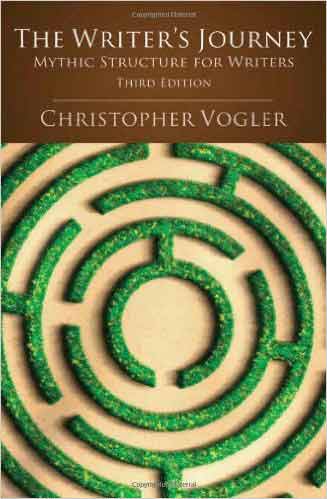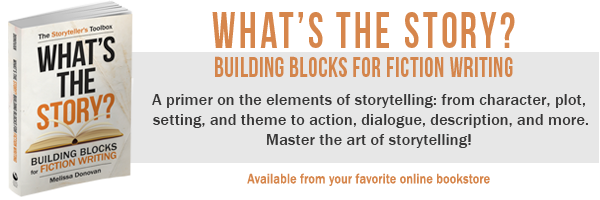This post contains affiliate links that earn commissions.
If you read only one book on storytelling, make it The Writer’s Journey by Christopher Vogler.
Over the years, I’ve read a lot of books on writing fiction. Many have been helpful, but some have left me feeling disappointed, especially those that promise their methods will result in a successful story or make grand claims that their way is the only correct way to write a story. I’ve seen these claims made in books on the writing process and in books on story structure.
The Writer’s Journey makes no such claims, but it does provide us with a story structure that was discovered, not created. It’s based on universal patterns in storytelling that are flexible yet proven. As you read through it, you’ll immediately recognize these patterns in almost every story you’ve read or watched.
A Little History
“The pattern of the Hero’s Journey is universal, occurring in every culture, in every time. It is as infinitely varied as the human race itself and yet its basic form remains constant.” — Christopher Vogler, The Writer’s Journey
Joseph Campbell was a mythologist who discovered recurrent patterns in myths, legends, and folklore. These patterns occurred in stories throughout human history and all around the globe. He recorded these observations in a book called The Hero with a Thousand Faces. This is the book that gave us the Monomyth, which is more commonly known as the Hero’s Journey.
Although it was brilliant, Campbell’s work was dense, highly academic, and spent a lot of time on the connection between psychology and mythology (as well as stories from scripture and religious traditions). It identified common patterns in storytelling, but it focused on myths, legends, and folklore, leaving out other genres. It was also rooted deep in the past, because it was based mostly on ancient tales. Human culture has since evolved, and so has storytelling.
Enter Christopher Vogler, a Hollywood script analyst who studied Campbell’s work and produced a seven-page memo for his peers to help them improve the stories in the films they were making. Vogler had reworked Campbell’s discoveries into a simple model for storytellers — a model that was applicable to all stories, not just myths and ancient legends. The memo became legendary in the storytelling world and was eventually expanded into a book called The Writer’s Journey.
The Hero’s Journey
“The self-conscious, heavy-handed use of this model can be boring and predictable. But if writers absorb its ideas and recreate them with fresh insights and surprising combinations, they can make amazing new forms and original designs from the ancient, immutable parts.” — Christopher Vogler, The Writer’s Journey
You’ve probably heard of the Hero’s Journey. There are hundreds of articles, videos, and blog posts about it all over the internet. Many authors have created their own variations. I’ve studied various incarnations of the Hero’s Journey over the years, but nothing is as clear or useful as The Writer’s Journey.
The Hero’s Journey is a structure for storytelling — a form, not a formula. It was observed, not invented, so it already existed and had a proven track record long before Campbell unearthed it or Vogler refined it. The pattern can be observed in stories such as The Wizard of Oz, which was created long before Campbell or Vogler came along.
The Hero’s Journey can be used to write stories, troubleshoot stories, or analyze and study stories. It also provides us with language for discussing common elements in stories, like the Herald, the Mentor, or the Call to Adventure.
I’ll provide a brief overview of the Hero’s Journey, but you’ll only get a fraction of what it’s all about if you don’t read Vogler’s book, which, by the way, is a fun and delightful read.
Archetypes
“The Hero’s Journey is not an invention, but an observation.” — Christopher Vogler, The Writer’s Journey
The Hero’s Journey starts with eight archetypes. They are often characters, but archetypes are better viewed as functions or energies in a story:
- Hero: Protagonist who undergoes a meaningful transformation through the story.
- Herald: Signals that an adventure (or change) is imminent.
- Mentor: Teacher and guide.
- Threshold Guardian: Blocks a threshold that the Hero must pass.
- Shadow: The villain and other characters that stand in the Hero’s way; often they embody the Hero’s negative or undesirable traits.
- Shapeshifter: A character or entity whose motives or intentions are unclear.
- Trickster: Comic relief; tricksters are often catalysts for change.
- Allies: The Hero’s friends and helpers.
Each of these archetypes has a very specific job to do in a story. Some characters may perform the functions of multiple archetypes, and some archetypal roles may be fulfilled by events or objects (such as when a book provides the function of a mentor).
Stages of the Journey
“The model only shows the most likely place for an event to occur.” — Christopher Vogler, The Writer’s Journey
The Hero’s Journey then delves into twelve stages of a story. This is not an outline or formula. The stages can occur out of order, and they can overlap one another. This is a very loose guide that we can use to assess a story’s structure and identify its core beats:
NOTICE: This section includes spoilers for The Wizard of Oz, Star Wars: Episode IV A New Hope, Harry Potter, and Titanic.
ACT ONE
1. Ordinary World: We see the Hero’s world before the story really kicks in. In The Wizard of Oz, this is Dorothy in the gray world of her family’s Kansas farm.
2. Call to Adventure: Something (usually a Herald) signals that change is afoot. A classic example is the first appearance of white rabbit in Alice in Wonderland.
3. Refusal of the Call: The Hero refuses to answer the call to adventure, often citing excuses. In Star Wars, Luke Skywalker insists he can’t accompany Obi-Wan Kenobi because he must stay and help his uncle on the farm.
4. Meeting with the Mentor: The Hero encounters a Mentor, who will provide guidance and bestow necessary tools and skills. In Harry Potter, Hagrid (and many other characters) provide Harry and his friends with guidance and magical objects that will be essential in overcoming the series of challenges they will face.
5. Crossing the First Threshold: The Hero passes the first Threshold, leaving the Ordinary World and entering the Special World of the story. In the film Titanic, Rose boards the ship with her mother and fiance. This is an example without a Threshold Guardian, but often the Hero must pass a test and get past a guard to cross the threshold into the Special World.
ACT TWO
6. Tests, Allies, and Enemies: The Hero acquires allies (often building a team), faces tests, and establishes enemies. In The Wizard of Oz, Dorothy finds allies in the Scarecrow, Tin Man, and Cowardly Lion. The Wicked Witch of the West issues a threat, becoming Dorothy’s enemy. Dorothy and her friends overcome a series of challenges as they journey toward the Emerald City.
7. Approach to the Inmost Cave: The Hero (usually accompanied by Allies) approaches the story’s central Ordeal. In Star Wars, this is when the Millennium Falcon is being sucked into the Death Star.
8. Ordeal: The Ordeal often occurs underground or inside the enemy’s lair. The Hero (and team) face their biggest threat and undergo a metaphorical death and rebirth. In some stories, this is a love scene, such as in Titanic, when Jack and Rose consummate their relationship in the vehicle storage section of the ship.
9. Reward: The Hero is rewarded for surviving the Ordeal. In The Wizard of Oz, Dorothy gains possession of the Wicked Witch of the West’s broom after she successfully kills the witch.
ACT THREE
10. The Road Back: There’s one more big challenge ahead. In Star Wars, Luke and his team are going to attempt to take out the Death Star.
11. Resurrection: This big challenge includes another metaphorical death and rebirth. In Titanic Rose almost drowns but wakes up and swims through the freezing water to grab a whistle and get herself rescued.
12. Return with Elixir: The Hero has successfully completed the journey and can now return to the Ordinary World, often bringing an elixir, which can be something that saves the people of the Ordinary World but can also be personal improvement. In The Wizard of Oz, Dorothy returns to Kansas with a new appreciation for home and family, and having integrated and balanced the three traits of kindness, intelligence, and courage.
The Writer’s Journey is a Must-Read for Anyone Interested in Storytelling
The Writer’s Journey is a guide, not an instruction manual, for storytellers. And while the overview above will give you a broad sense of how it works, the book itself delves deep into each archetype and stage of the Hero’s Journey, providing clear yet detailed descriptions along with examples from well-known films, so you can easily relate the concepts to real-world examples. There are also in-depth analyses of films like The Wizard of Oz, Titanic, and Pulp Fiction to show how the Hero’s Journey works in some of the most successful stories of all time.
I cannot recommend this book strongly enough. And I’m glad it’s available in paperback, because I marked it up with notes and highlights, and I’m sure that I will return to it again and again, both in my work as a storyteller and as a writing coach.





